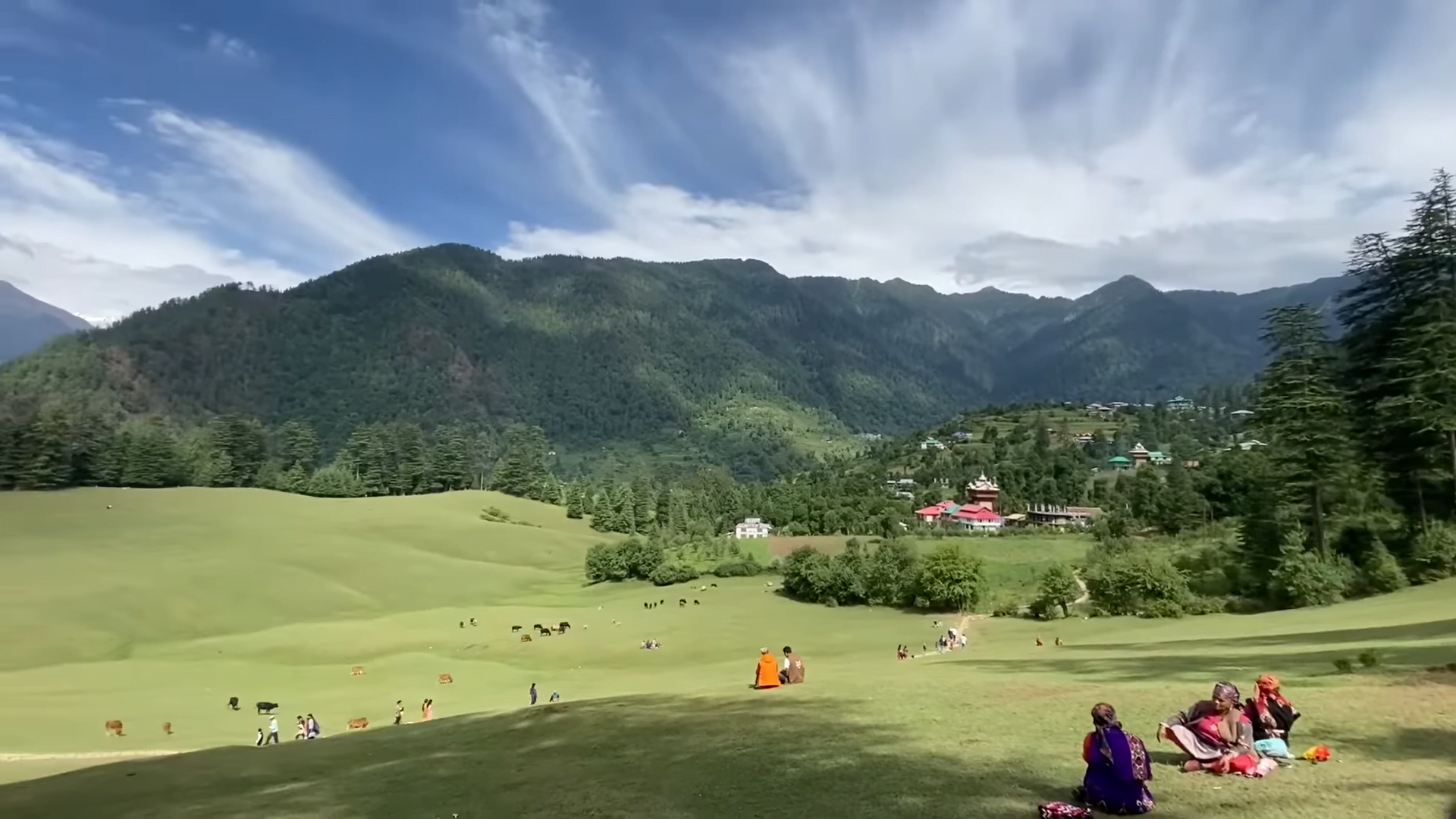Shangarh is a picturesque village located in the Sainj Valley of Himachal Pradesh, India. It is a well-liked location for hikers, trekkers, and nature lovers due to its serene and untouched natural beauty. Surrounding the village are visually appealing apple orchards, vibrant Kullu Topis, and traditional Kulluvi-style houses.
Additionally, Shangarh is the location of several regional temples, including the well-known Shangchul Mahadev and Manu temples, which are significant both historically and culturally. In the middle of the breathtaking scenery of the Great Himalayan National Park, the village is the perfect getaway for those looking for quiet and solitude. Wandering through the Shangarh meadows, touring neighboring villages, and taking in the rustic charm of the mountains are among the things that visitors can do.
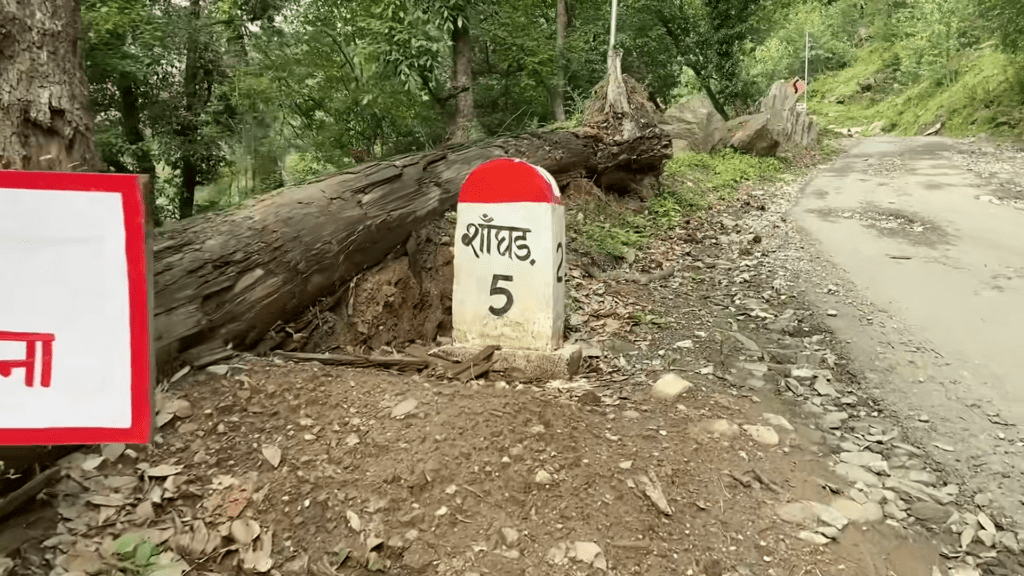
Because of its closeness to the Great Himalayan National Park and its thick forests, Chandigarh is a hidden gem for tourists wishing to get away from it all and discover unusual places because of its closeness to the Great Himalayan National Park and its thick forests.
Shangarh
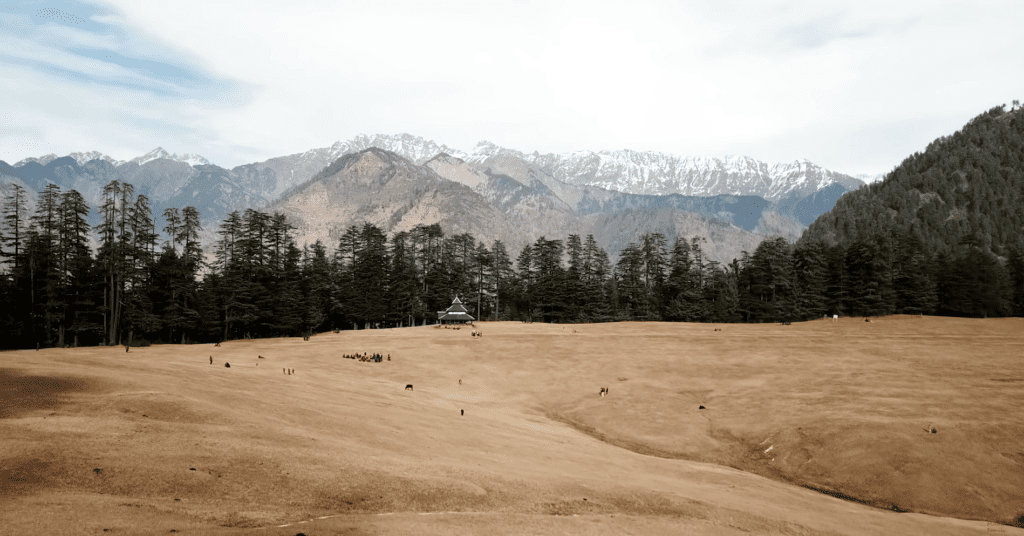
Shangarh is located 57 kilometers from Kullu airport in the Sainj Valley in the district of Kullu, in the center of the Great Himalayan National Park, a UNESCO World Heritage Site.What makes it unique? The largest national park in India, covering an area of 1171 square kilometres, is called GNHP. It is separated into ecozones and protected zones, which serve as home to a wide variety of flora and over 375 species of fauna, including roughly 31 mammals, 181 birds, 3 reptiles, 9 amphibians, 11 annelids, 17 mollusks, and 127 insects.
With the surreal view of the meadow, you can easily spot the peaks of Pin Parvati and Spiti from this village. Meadows are typically found above 3000 meters, but this one in Chandigarh is located at 2000 meters.
A Brief Overview of Shangarh’s History: According to the locals, the Pandavas arrived here during their period of abandonment in the Mahabharata and created the meadows by preparing the land for rice cultivation. After the Pandavas departed, demons took up residence here. It is said that these demons were vanquished by Shangchul Mahadev of Kinnaur, who is now the legal owner of the meadow and has established a traditional wooden Himalayan temple encircled by neighborhood homes.
How to reach Shangarh from Delhi
You can reach Shangarh from Delhi by various modes of transportation. The most common ways to reach Shangarh from Delhi are
By Car
You can drive from Delhi to Shangarh, which takes approximately 13-14 hours. The route involves taking a left turn before the Aut tunnel and then proceeding towards Shangarh via the Sainj road. The total distance is roughly around 485 km.
Delhi-Panipat-Karnal-Ambala-Chandigarh-Bilaspur-Sundernagar-Mandi-Aut-Sainj-Shangarh
By Bus
Take an overnight bus from Delhi to Aut, which takes about 10-12 hours. From Aut, you can take a bus to Sainj and then another bus to Shangarh. Shangarh is on Delhi Manali Highway up to Aut Tunnel. To get to Shangarh, take a direct taxi from Aut (it will take an hour to 1.5 hours). It is a more costly but easier option nonetheless. There is a range of INR 1500 to INR 2000 for the fare.
By Air
Another option is to take a flight from Delhi to Bhuntar Airport and then travel to Shangarh by road
Where to stay in Shangarh
There are several accommodation options in Shangarh, ranging from hostels to homestays and hotels. Some popular places to stay in Shangarh include:
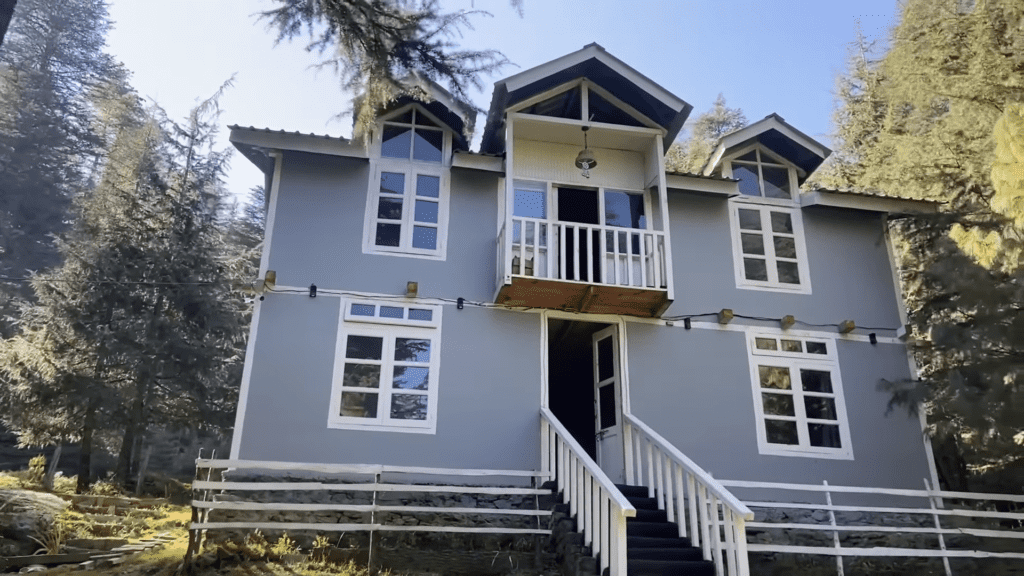
- Woodzo
- Zostel Shangarh, Kullu
- The Hosteller Shangarh, Sainj Valley
- Hiraeth Shangarh, Sainj Valley
- Enchanted Meadows Shangarh
- Mud Hostel Shangarh
- Saatvik Shangarh
These choices provide guests with a pleasant and relaxing stay in the peaceful setting of the Sainj Valley while accommodating a range of tastes and price ranges. Shangarh provides a variety of options to meet your needs, whether you’re searching for a comfortable homestay, a hostel, or a hotel.
Shangarh Attractions & Activities
Shangarh meadows
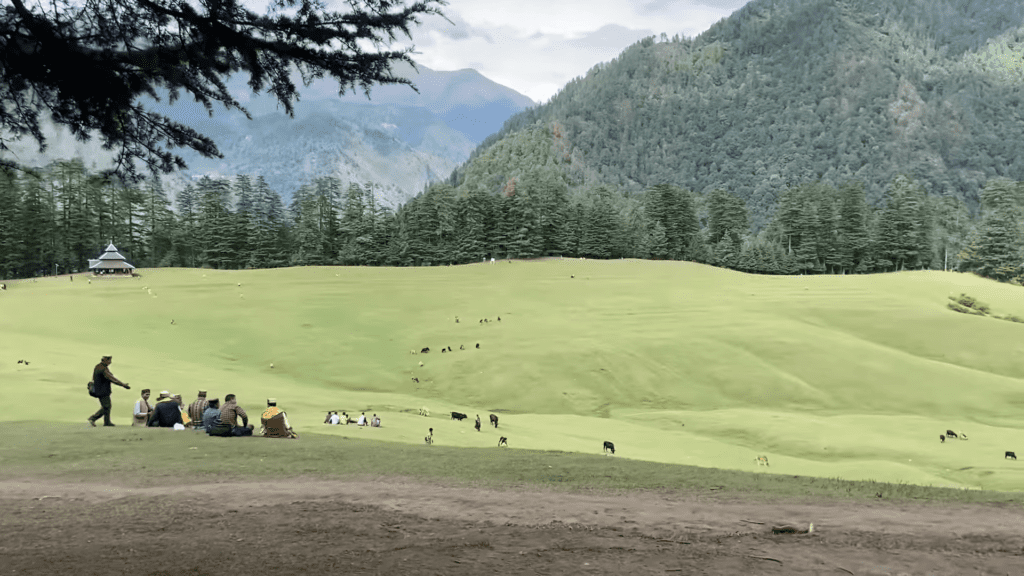
The Shangarh meadows are a major draw; they’re spacious areas where you can work, read, unwind, and have picnics with friends. You can also bring a packed lunch from your accommodation. The Shangchul Mahadev temple, constructed in the style of traditional Katha Kuni architecture, is situated close to the meadows.
Shangchul Mahadev Temple
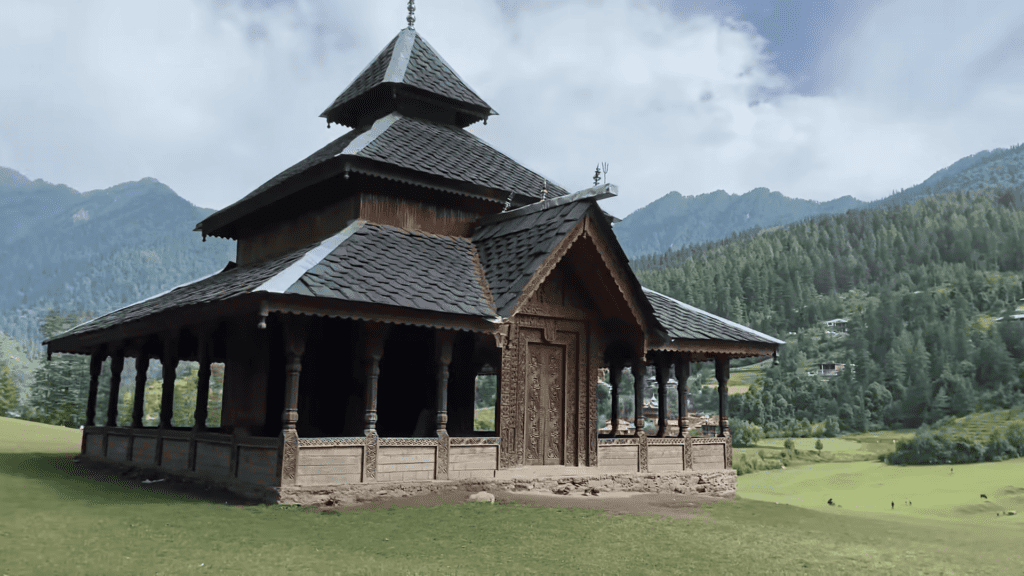
Both residents and tourists are drawn to admire the craftsmanship of its exquisite wooden architecture. The villagers hold this well-known temple and the verdant pastures surrounding it in high regard. It is expected of visitors to respect the meadows by abstaining from alcohol outside and keeping quiet.
Barshangarh waterfall
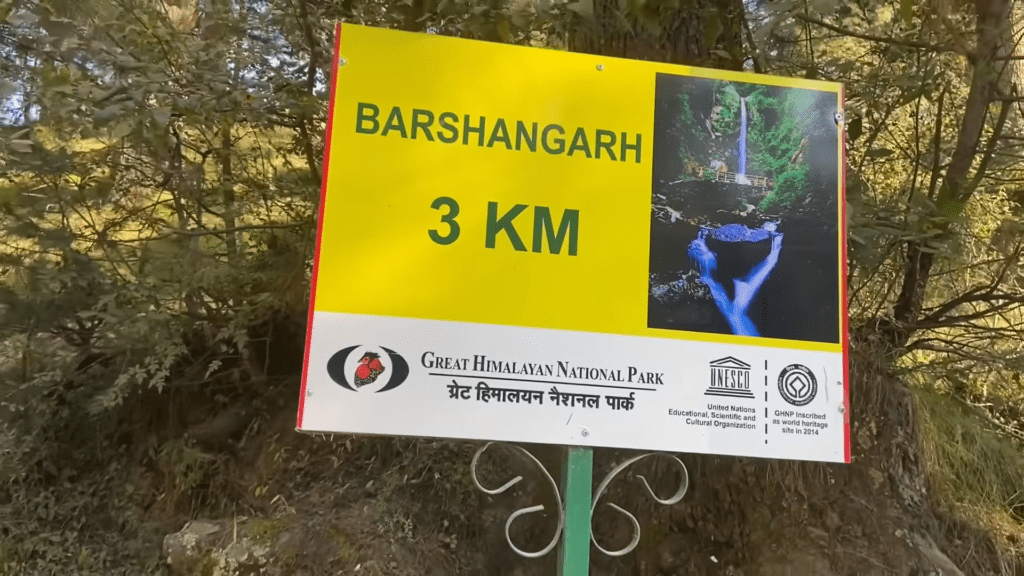
Drive up to these frothy-white falls early in the morning; it’s a 30-minute hike to reach them. At the base of the falls, indulge your senses by sipping the best water, inhaling the scent of pine, listening to birdsong, and feeling the refreshingly cold water against your skin.
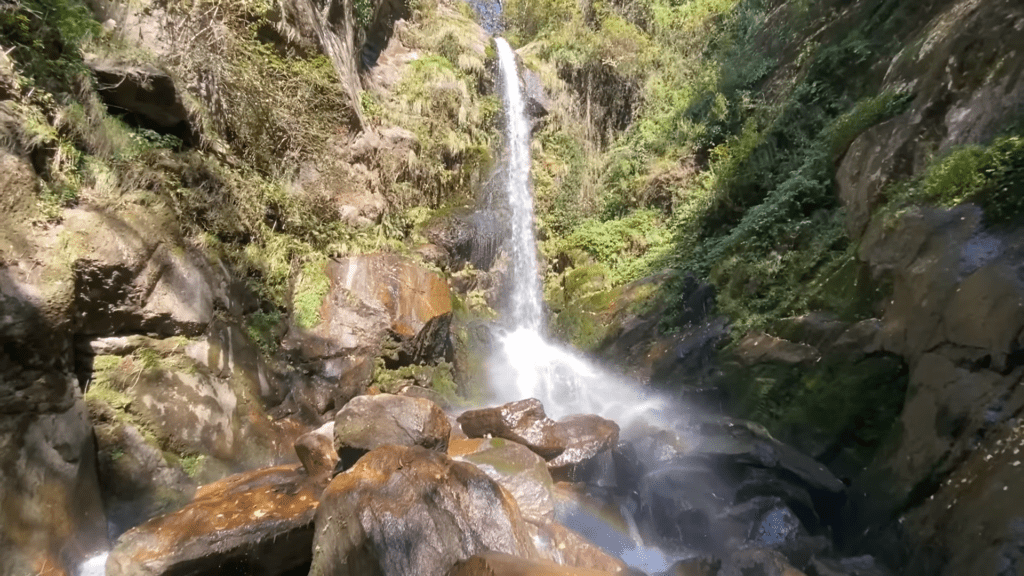
Set out on a day hike to see the stunning Barshangarh waterfall; it only takes two hours to get there from the main village. The hike includes a brief climb to the waterfall in the final ten minutes. It’s the ideal place to spend a few hours before heading back to your lodging for breakfast.
Rupi Raila waterfall

You will arrive beneath the Raila waterfall after a half-kilometer hike from Raila Fort. This undiscovered treasure is the ideal location for fun and adventure. However, the Barshangarh waterfall is even more magnificent. It is in an attractive location and encircled by a thick layer of vegetation. When you sit by the rocks or take a bath beneath the falls, the narrow stream gushes down. The most beautiful sounds of the jungle and birds transport you to a completely different place while you’re here. Just a friendly reminder that it will be more convenient and comfortable to hike through rocky terrain if you wear your trekking shoes and socks.
Raila twin towers or Raila Fort
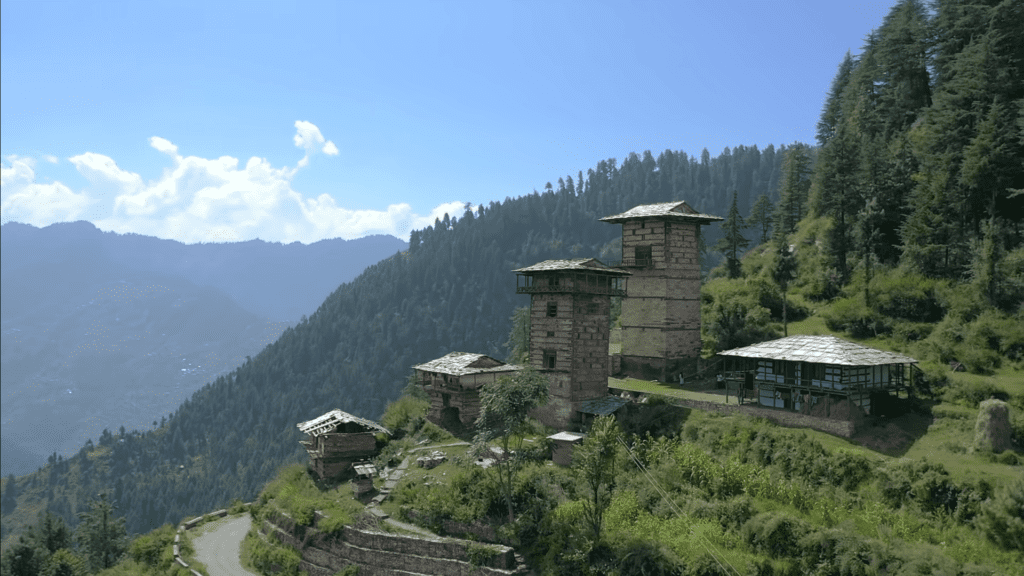
Another village close to Shangarh, Raila, is well-known to tourists for Raila Fort. The former monarch or ruler of Raila built it. Situated at one of the highest points in the village, the twin towers served as a strategic point for soldiers and guards during the ancient era. You will find that the watchtowers of the fort offer the best view of the Sainj valley during your visit. The narrow passageways and tiny rooms will captivate you even more if you have a strong interest in archaeology, history, or architecture.
Trek from Deohari village to Pundrik Rishi Lake:
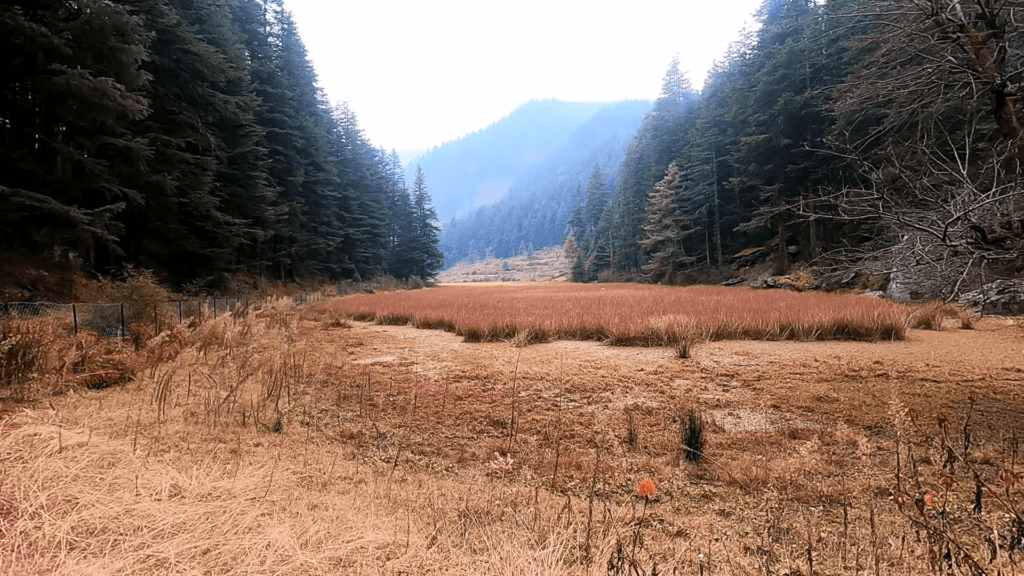
There aren’t many places to stay in the charming Sainj Valley village of Deohari. You can relax and engage with the amiable locals while taking a leisurely stroll around the town. In addition, you can hike from Deohari village to the scenic Pundrik Rishi Lake.
The walk is a great experience that takes about 1.5 to 2 hours and passes through dense forests. There’s a temple honoring Pundrik Rishi at the end of the trail. You can visit the Rupi Raila waterfall in addition to this trip.
Experience Shangarh’s Sunrise and Sunset
Observe the famous sunrise and sunset. One of the most magnificent sights we will ever see is a sunrise. Even the hardstand souls can feel the warmth of its beauty, which is a strong force. It reenergizes, inspires, instills hope, and renews. You can have the best of both worlds—warm sunrises and calming sunsets from the top of the village—by hiking just 800 meters from the main village to the No Society Cafe. Use your geographic senses or get in touch with the cafe staff if you can’t find exact information on the hike on the Google map.
Trekking nearby Shangarh
Jiwa Nala Trek
Experienced hikers can take on the strenuous 7-day Jiwa Nala trek, which starts in Neuli village and ends in Parvati Valley. It is strongly advised to do this trek with knowledgeable local guides who are familiar with the routes and terrain, or in a group. Owing to its elevated elevation and extended duration, this hike is appropriate only for seasoned hikers.
Thini Thatch Trek
You can finish the Thini Thatch hike in a single day, or two if you want to camp along the way. The trip starts in the village of Shangarh. It climbs to 11,500-foot Thini Thatch, an alpine meadow. You will be treated to breathtaking views of the surrounding valleys and mountains throughout the entire trek.
It’s vital to remember that this hike is on the harder side. It is best to hire a local guide if you are not experienced with trekking in Himachal Pradesh.
journey by night to Lapha village
Lapha village is easily reachable with an easy to moderate 4- to 5-hour hike. You can get assistance from local guides on this lovely trek. While there aren’t many lodging options available in the village, camping is still recommended for a distinctive experience. Visit the Sainj office of the Great Himalayan National Park for additional information about this trek.
Discover the Nearby Himachali Villages
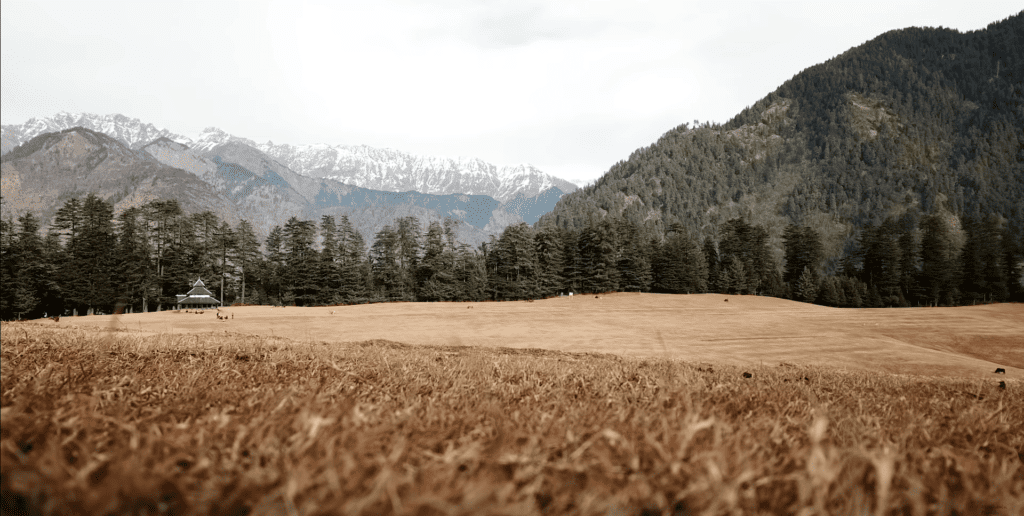
Make sure you continue your journey to the neighboring villages as you get ready to explore Shangarh. Nearby Goshati and Darari beckon with their picturesque apple orchards and colorful Kullu Topis gracing the scenery, illuminating the simplicity of mountain living. Explore wheat and vegetable fields that are grown using conventional farming techniques. The characteristic wooden Himachali houses give the landscape a little something extra.
See the nearby villages of Darari and Goshati. Shakti and Marari, two equally lovely villages, border the national park as well. Take a stroll through apple orchards, enjoy sweeping views of the valleys from the hills, and relax in a peaceful nook while stargazing and breathing in the clean mountain air. You can also take a car to Tirthan Valley and spend some time taking in the stunning scenery.
Immersion opportunities abound because the amiable locals are willing to share fascinating local mythological stories or strike up a pleasant conversation. Also read :https://travelshoebum.com/2017/07/08/shangarh-in-sainj-valley-of-temples-and-meadows/
Best Time To Visit Shangarh
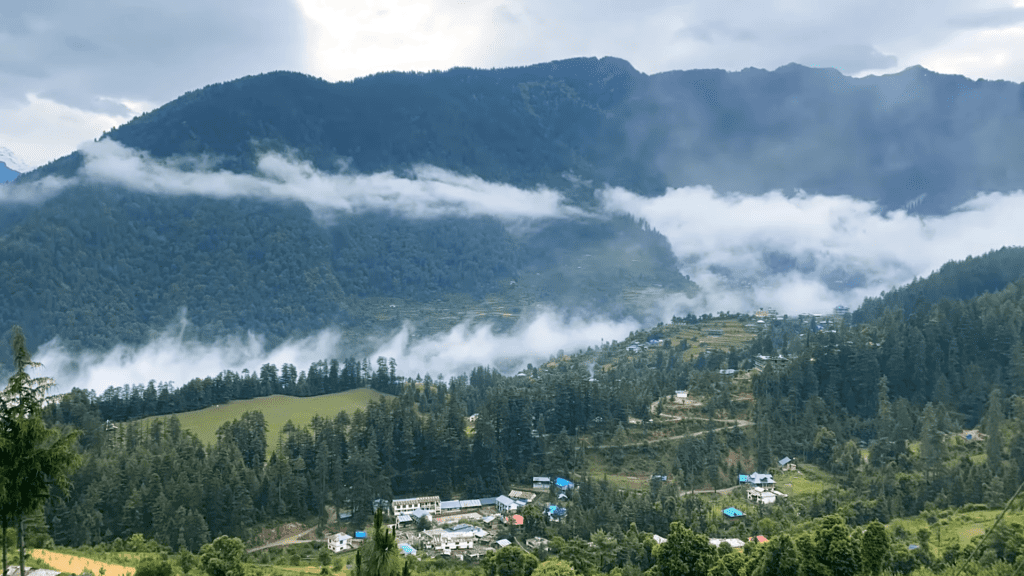
From December through March: First of all, it’s winter, and there will be a fair amount of snowfall during this time. In addition, you should go during these months if snowfall is your top priority. In addition, it gets very cold at this time.
Additionally, April through June is the busiest time of year for travelers. In addition, the weather is pleasant and the sun is out all day. In addition, you may experience rain showers at this time.
But July through September is when the monsoon peaks. Even though these months are beautiful, landslides and cloud bursts can occur at any time. The valley is at its greenest in these months, though visiting Himachal Pradesh during these times is not advised.
October and November: The beginning of winter in October and November is another fantastic time of year for travelers to swarm this area. It also gives visitors experiences that are not found elsewhere.
What has made Shangarh well-known?
Shangarh is well-known for its breathtaking meadows, an area of unmatched natural beauty. The Shangchul Mahadev Temple, which is significant both religiously and culturally, is another reason for its fame. Travelers looking for serenity and a distinctive experience will find Shangarh to be a tranquil and unusual destination. It’s also becoming more and more well-liked as a “workation” location, where people can work remotely while taking in the tranquility of nature.
How much time is enough to spend in Shangarh?
The days you spend in Shangarh can vary depending on your interests. Generally, 3-4 days are enough to explore the village and its surroundings. However, you may want to engage in extensive hiking or experience a deeper connection with nature. In that case, you might choose to stay longer


